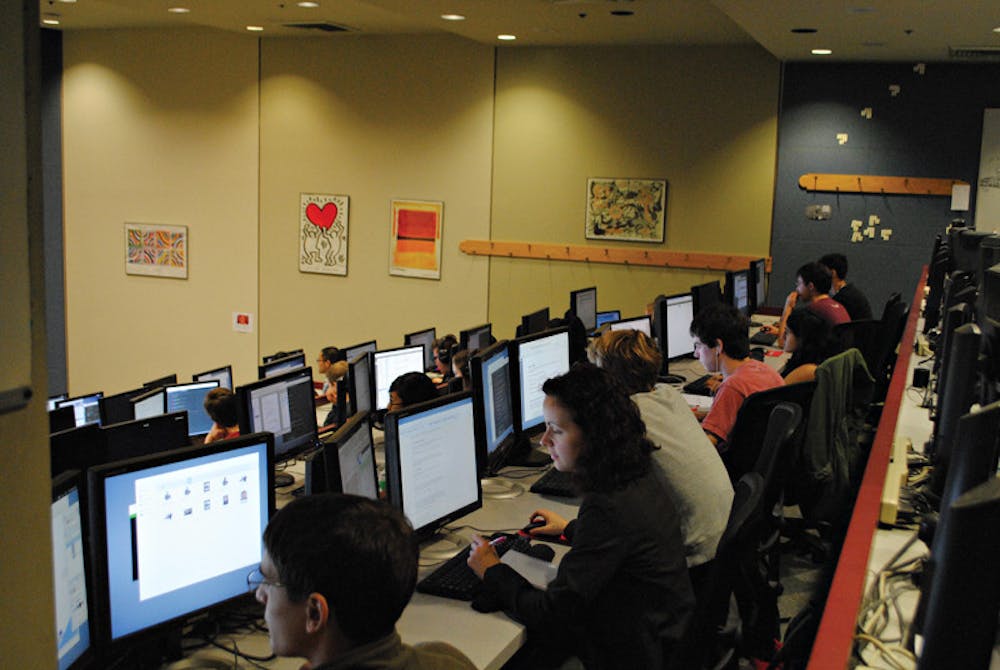In 2017, 144 Brown students — 7.7 percent of the Class of 2017 — graduated with computer science degrees. This was a drastic increase from just nine years ago, when only 34 graduating seniors concentrated in computer science. Similarly, 100 students completed an engineering degree this year compared to just 54 in 2008. The staggering growth in engineering and computer science graduates stands in sharp contrast to the large declines in many humanities departments: The history of art and architecture department, for example, had a graduating class of 76 in 2008 but only 12 concentrators in 2017, while the religious studies department saw its concentrators drop from 24 to just five in the same time frame.
Course enrollment data show similar trends, which means that even non-concentrators are choosing to take more courses in science and engineering fields and fewer in the humanities. This tendency is not unique to Brown: Computer science and engineering have attracted more majors on a national scale in recent years due to technological advancements and the growing national demand for these skills. At the same time, many humanities departments — particularly smaller ones — have seen declining student participation. Given the University’s historical emphasis on a multifaceted education, this pattern has serious implications for Brown’s structural and curricular model — implications that administrators should consider going forward in the digital age.
On the one hand, this shift in enrollment and concentrators can help Brown achieve the goals laid out in President Christina Paxson’s P’19 strategic plan, “Building on Distinction.” The plan extended previous efforts to shift away from the university-college model of Brown’s past to a research-university structure. The growth in STEM departments could facilitate this shift by drawing in additional research funding and attracting high-profile faculty to the school. Increasing enrollment in departments such as computer science and engineering could also strengthen these departments — which have historically received less attention than the humanities — and improve Brown’s research profile. Moreover, it is important to note that STEM fields are not antithetical to a liberal arts education. In fact, bolstering these areas of study can complement Brown’s mission to provide students with a well-rounded education in many disciplines, particularly in a world where technology and science are becoming an integral part of our social and economic infrastructure.
On the other hand, this shift could drastically recast Brown’s focus on liberal learning. The University has historically emphasized the importance of an education that prioritizes both “breadth and depth: basic knowledge in a range of disciplines, focused by more concentrated work in one.” While this curricular model is an essential element of Brown’s identity, our continued focus on a liberal arts education is critical for reasons beyond tradition. A liberal education provides a solid grounding in a range of different skills that students can carry with them into the workforce, including communication, collaboration and the ability to embrace diversity and build bridges with people from different backgrounds. These skills are vital — even in an economy that increasingly relies on science and technology — but they can only be developed through engagement in a multitude of departments. However, as more students enter STEM fields that often have many prerequisites and requirements to satisfy, Brown will see fewer students take advantage of the Open Curriculum and emerge with a strong grounding in liberal arts.
In addition, the rapid influx of students into a few STEM concentrations can overwhelm those departments. More worryingly, the decreasing enrollment of students in many humanities concentrations — often those with the least funding — could well result in even fewer resources spent on these departments. Logically, if fewer students concentrate in certain fields, the departments will begin to receive less funding, harming not only their educational capacity, but also their ability to conduct research and attract more faculty and graduate students. We are already beginning to see this in the University’s resource allocation decisions: The engineering department has just unveiled its new Engineering Research Center, while many humanities departments are still housed in aging, cramped buildings. This is a reasonable response to both national trends and student preferences, but comes at the cost of the small, niche departments fundamental to a well-rounded liberal arts education.
With the rise of technology, it is inevitable that more students will drift toward departments like computer science and engineering. These shifts could arguably better prepare students for careers in a tech-oriented world. Ultimately, however, the University needs to balance this growth with a continued commitment to the emphasis on liberal learning objectives that put it on the map in the first place. If not, we risk compromising the fundamental spirit of a Brown education.
Samantha Savello ’18 can be reached at samantha_savello@brown.edu. Please send responses to this opinion to letters@browndailyherald.com and other op-eds to opinions@browndailyherald.com.





